Deck replacement costs depend on materials, any structural damage you need to fix, and more. This guide explores how much it costs to replace or repair a deck.
Deck Board Sizes: Which Is Right For Your Yard?
Pick the perfect plank parameters to design your dream deck


Deck board sizes vary by length, width, and thickness.
The most common dimensions are 12 or 16 feet long, 5.5 inches wide, and 1 inch thick.
The deck board size you select depends on your desired design and functionality.
Go longer and wider to achieve a clean look, and narrower for intricate designs.
Go thicker for sturdier construction when you have high traffic or heavy loads.
You’ve measured out the space to install a stylish cedar wood deck to host BBQs all summer long. However, it’s not just the overall deck size and material type you need to consider. There are a wide range of deck board sizes, and the one that’s best for your project depends on your budget, location, usage, and the final look you have in mind. Our guide will help you sort through the options.
What Is the Standard Deck Board Size?
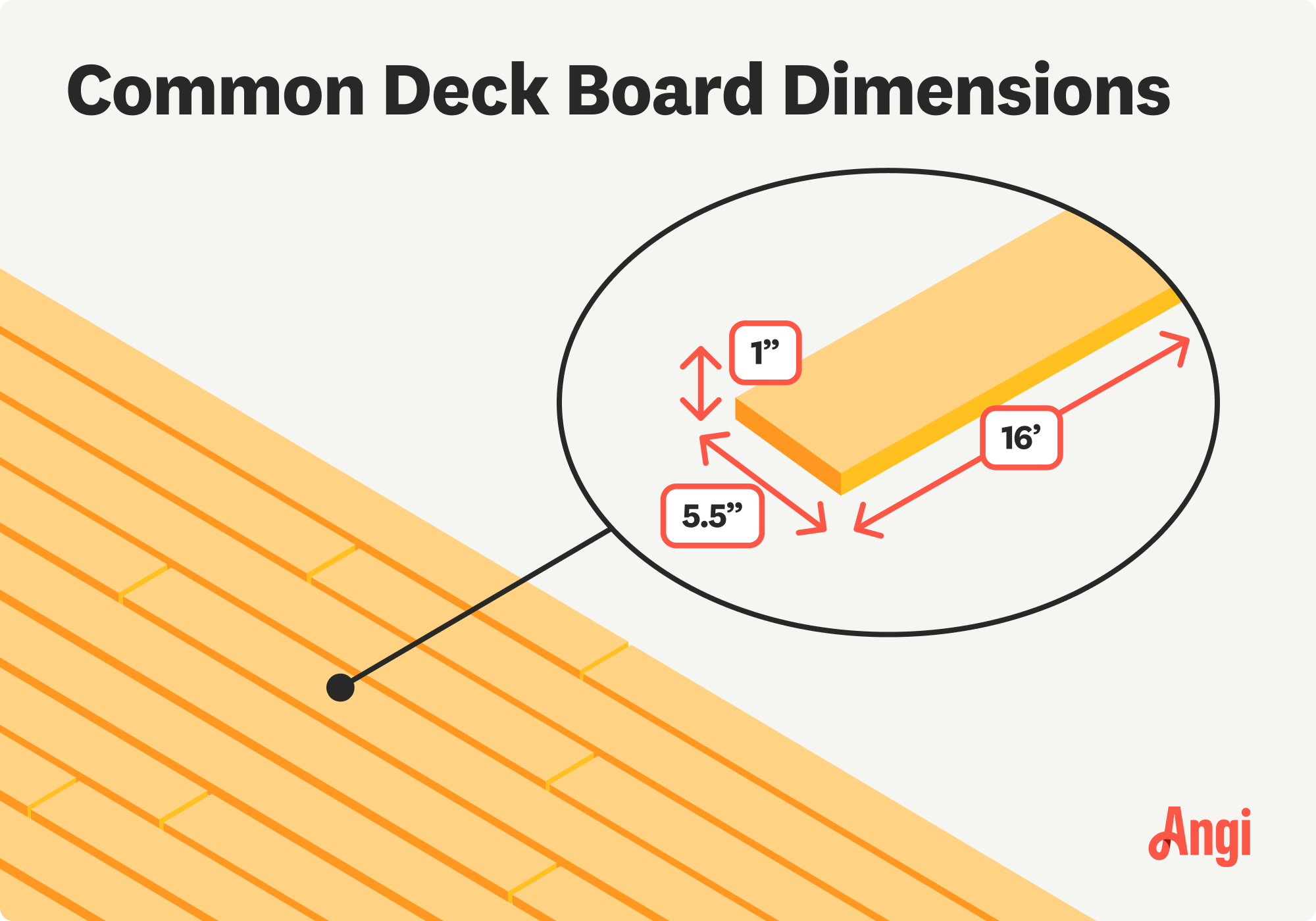
While there isn’t one standard deck board size, the most common dimensions for individual planks are 1 inch thick, 5.5 inches wide and 16 feet long. However, there is a wide variation in sizes to accommodate different aesthetics and practical considerations, like local climate, budget, and deck traffic.
Deck Board Size by Dimension
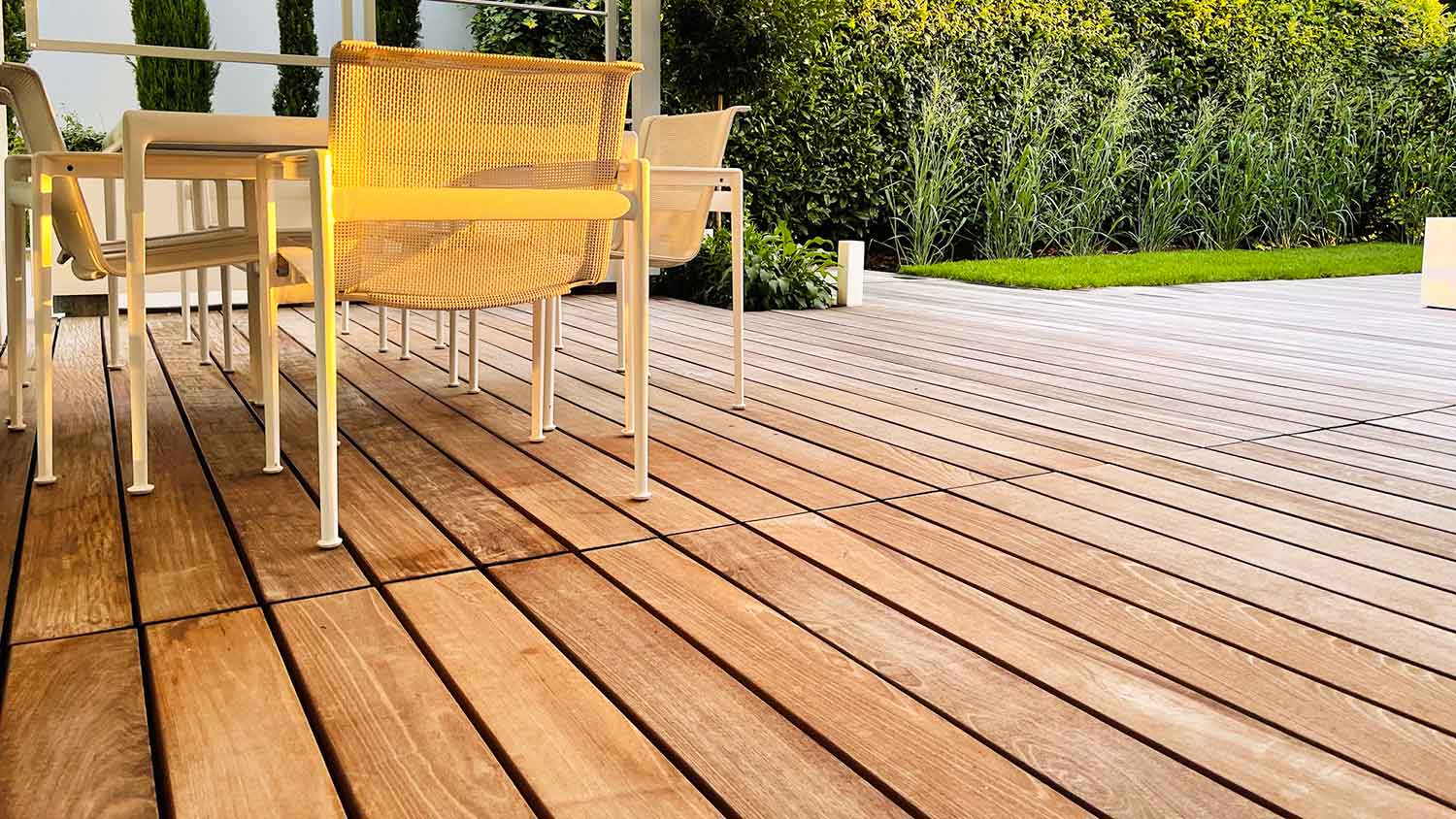
It’s not just length you have to consider when selecting deck board sizes. The width and thickness of the boards are just as, if not more, important.
| Dimension | Minimum average size | Mid-range size | Maximum average size |
|---|---|---|---|
| Length | 12 feet | 16 feet | 20 feet |
| Width | 4 inches | 5.5 inches | 8 inches |
| Thickness | 0.9 inches | 1 inch | 1.5 inches |
Length
12-foot and 16-foot deck board lengths are most common, especially for composite decking boards. However, 20-foot lengths are also available, especially for timber decks. Purchasing boards in other lengths is possible, but this can limit the available deck material options, and you may have to pay extra for customization.
If in doubt, it’s better to opt for a longer size, as you can cut these down to your desired size.
Width
The most common width for deck boards is 5.5 to 6 inches. However, you can purchase boards ranging from 4 inches to 8 inches in width. The width you opt for depends on the look you’re aiming for: wider for sleek contemporary decks and narrower for traditional or intricate decks.
Note that the Timber Decking and Cladding Associationdoesn’t recommend using boards wider than 6 inches, as this can hamper fast drainage and increase the chance of problematic board movement due to moisture content.
Thickness
Deck boards are most commonly 1 inch thick. This is referred to as a 5/4 deck board. However, 1.5-inch boards are also widely available, offering greater durability and support for high-traffic and heavy-load decks.
Things to Consider Before Choosing a Deck Board Size
Consider the following factors before deciding which length, width, and thickness of deck board will suit your project best.
Deck Aesthetic
If your deck is small or you want to get creative with an elaborate design, opting for narrower boards can be better. Wider, longer boards means fewer seams, creating a cleaner, expansive feel for contemporary or minimalist deck designs.
Deck Usage
Opting for common 1-inch thick deck boards is typically a safe bet for most home deck setups. However, if your family plans on luxuriating in a large hot tub or hosting barbecues for big groups, selecting thicker boards makes sense.
Thicker boards are more durable and provide better support for heavy loads and high-traffic decks. Ensure the deck’s support framework has enough joists to prevent long boards from sagging over time.
Ease of Installation
Because you’ll need less long, wide boards than shorter, narrower ones, and they also often need less frequent joist spacing for structural support, you may be able to install bigger boards more quickly. However, shorter, lighter boards are easier to work with.
Climate
Thicker deck boards are a good idea if you live in a wintry region, where your deck could be put under extra strain from heavy snow loads.
Budget
Unless you need a thicker board for handling heavier loads, opting for a 1-inch thick deck board is more cost-effective than a 1.5-inch or thicker variety. The average cost to build a deck is $8,219. While you won’t shave lots off this by selecting thinner boards, it can be helpful when you’re working with a tight budget.
You’ll also pay more per linear foot for non-standard sizes that are less readily available or need to be custom-made. For example, this might be the case for extra-long (20 feet or more) boards.
How to Calculate the Number of Deck Boards Needed By Size
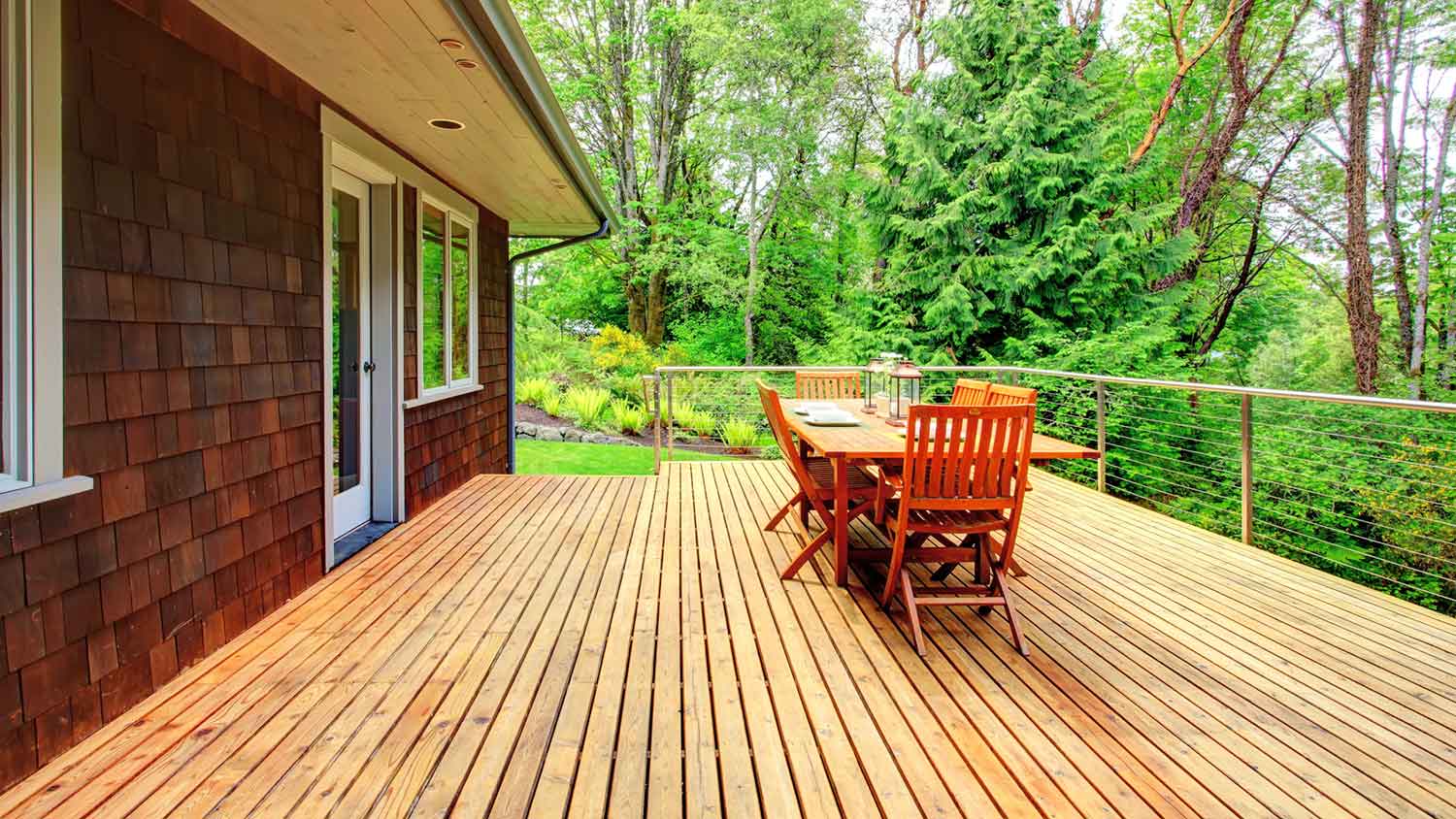
To work out how many deck boards you'll need to complete your project, calculate the overall square footage of the deck design, confirm the board size, and factor in board spacing.
If you’re hiring a local deck builder to do the work for you, you don’t have to worry about any complex calculations, as the pros will measure for you. If you're learning how to build a deck yourself, use an online deck board calculator or do the following math:
Calculate the deck’s square footage: Multiply the planned length by the width. For example, a 19-foot long x 19-foot wide deck will be 361 square feet.
Calculate a single board’s square footage: Convert the board's width from inches to feet. Do this by dividing the inch width by 12. This means a 5.5-inch wide board is 0.46 feet. Now multiply the width by the length of the board. For example, 0.46 multiplied by 16 (for a 16-foot board length) is 7.36 square feet per 16-foot board.
Calculate the number of boards required: Divide the total square footage of the deck by the square footage of a board. In this case, 361 divided by 7.36 is 50 boards (rounded up).
Add 10% extra for wastage: Bringing the total number of boards up to 55 makes sense, because—let’s face it—mistakes happen.
If you want to get even more particular, you can factor in the spacing you need to leave when laying boards. This might slightly reduce the number of boards you need.
All decks require spacing between each board to account for drainage, ventilation, and natural expansion and contraction. Wider boards need extra spacing as they will expand and contract more. The gap typically varies from ¼-inch (6.5 mm) to ⅜-inch (9.5mm).
What to Do if You Have the Wrong Size Deck Boards
Getting the wrong deck board size can be a minor inconvenience or a major mishap.
If the boards are still packaged, you may be able to arrange a refund or replacement. Other times, you might need to revisit your design if you don't want to waste boards and eat into your budget.
If you go wider than planned, for example, you can keep the boards—it's just that your design will look different, and you'll need to recalculate your spacing.
However, if your deck needs to handle heavy loads and you don't go thick enough, this could be a deal breaker in terms of longevity and safety. When in doubt, consult with a local deck and porch professional to get advice on any safety or stability issues and redesign options.
The homeowners guide to deck and porch services
From average costs to expert advice, get all the answers you need to get your job done.

Are your porch columns old or simply unsightly? It might be time to refresh them. Here's a breakdown of the cost of replacing porch columns.
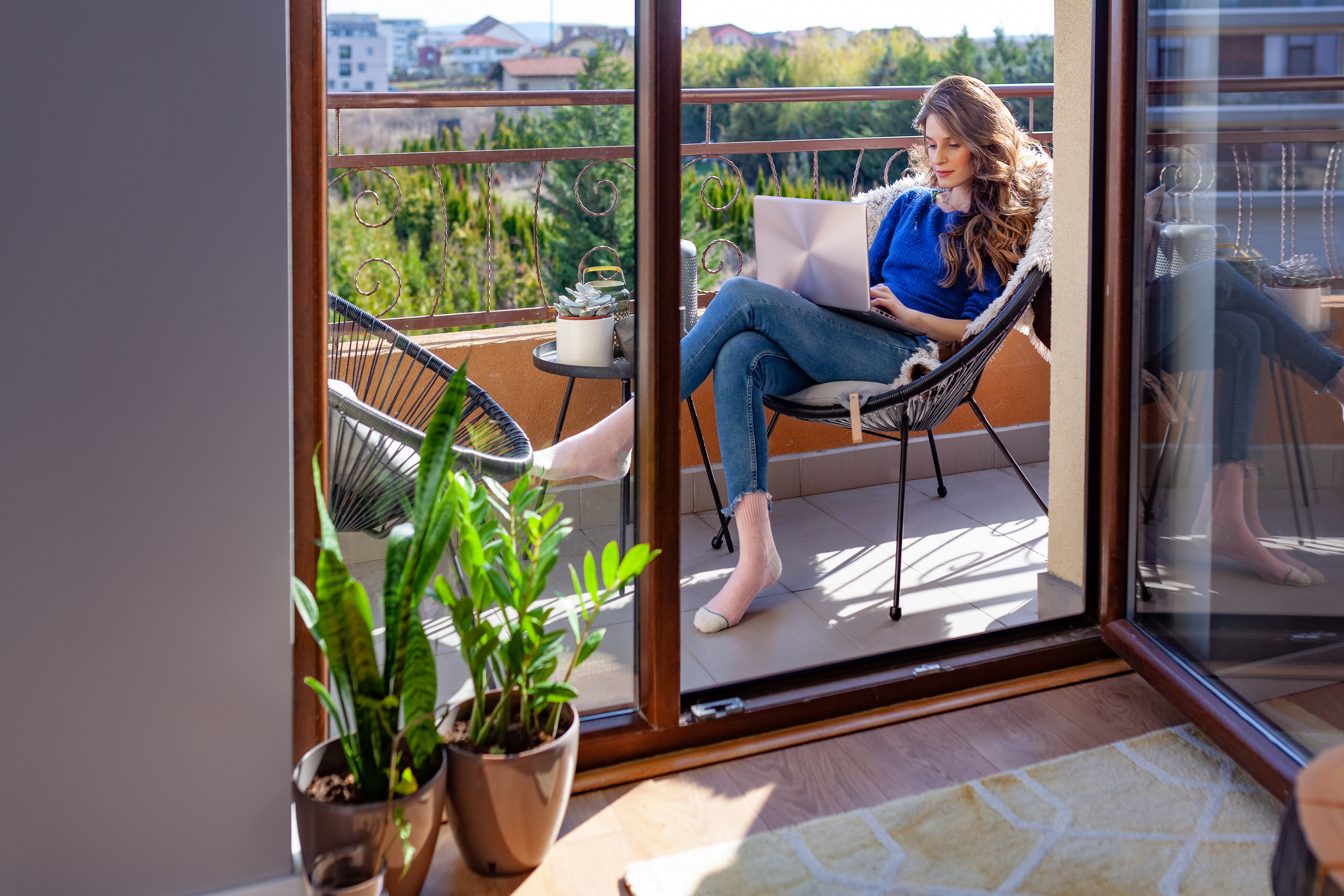
Discover how much it costs to build a balcony, including average prices, cost factors, and tips to budget your project. Learn what impacts balcony construction costs.
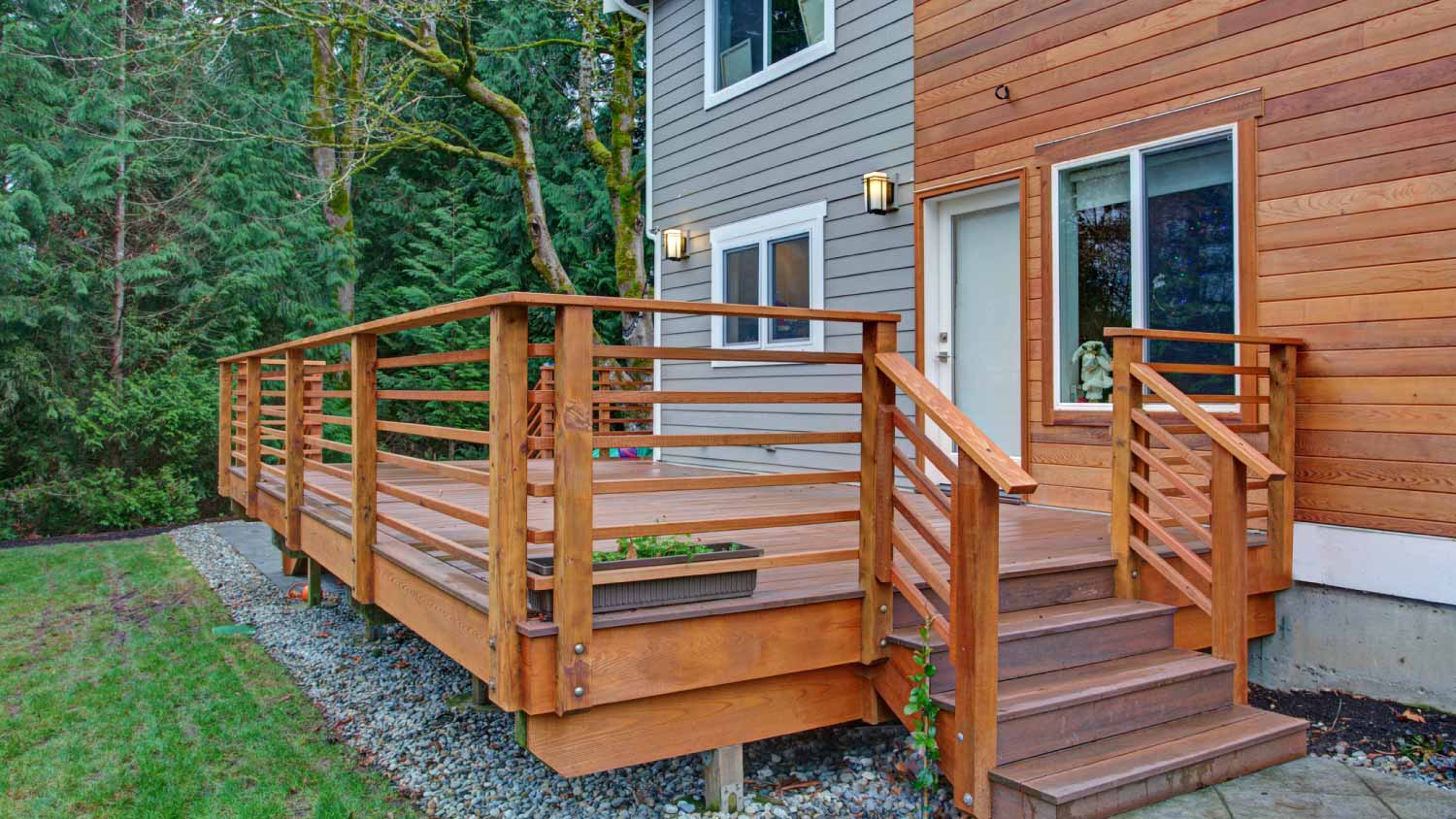
Unstable deck stairs can lead to serious injury. Learn how to attach stairs to a deck to keep your outdoor living space safe, cozy, and secure.
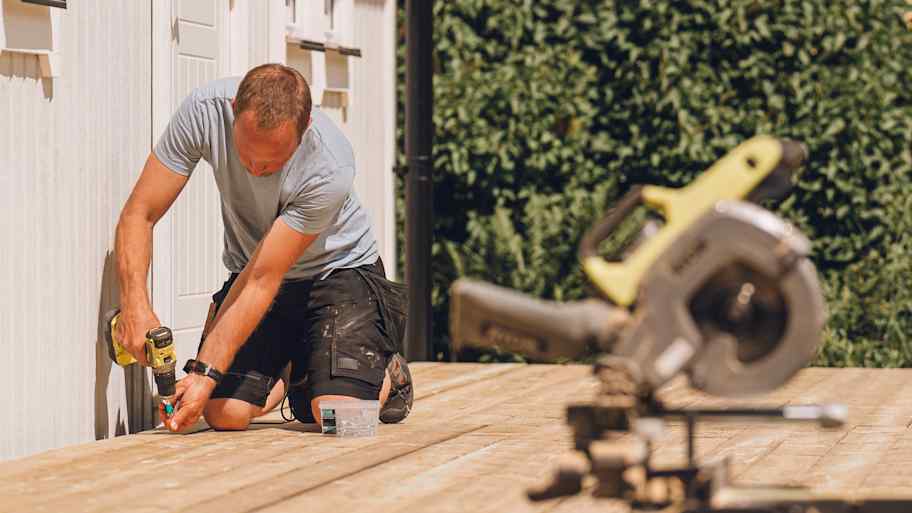
You’re designing your dream backyard deck when an important question crosses your mind: “How much decking do I need?”. Figure it out with this deck calculator.
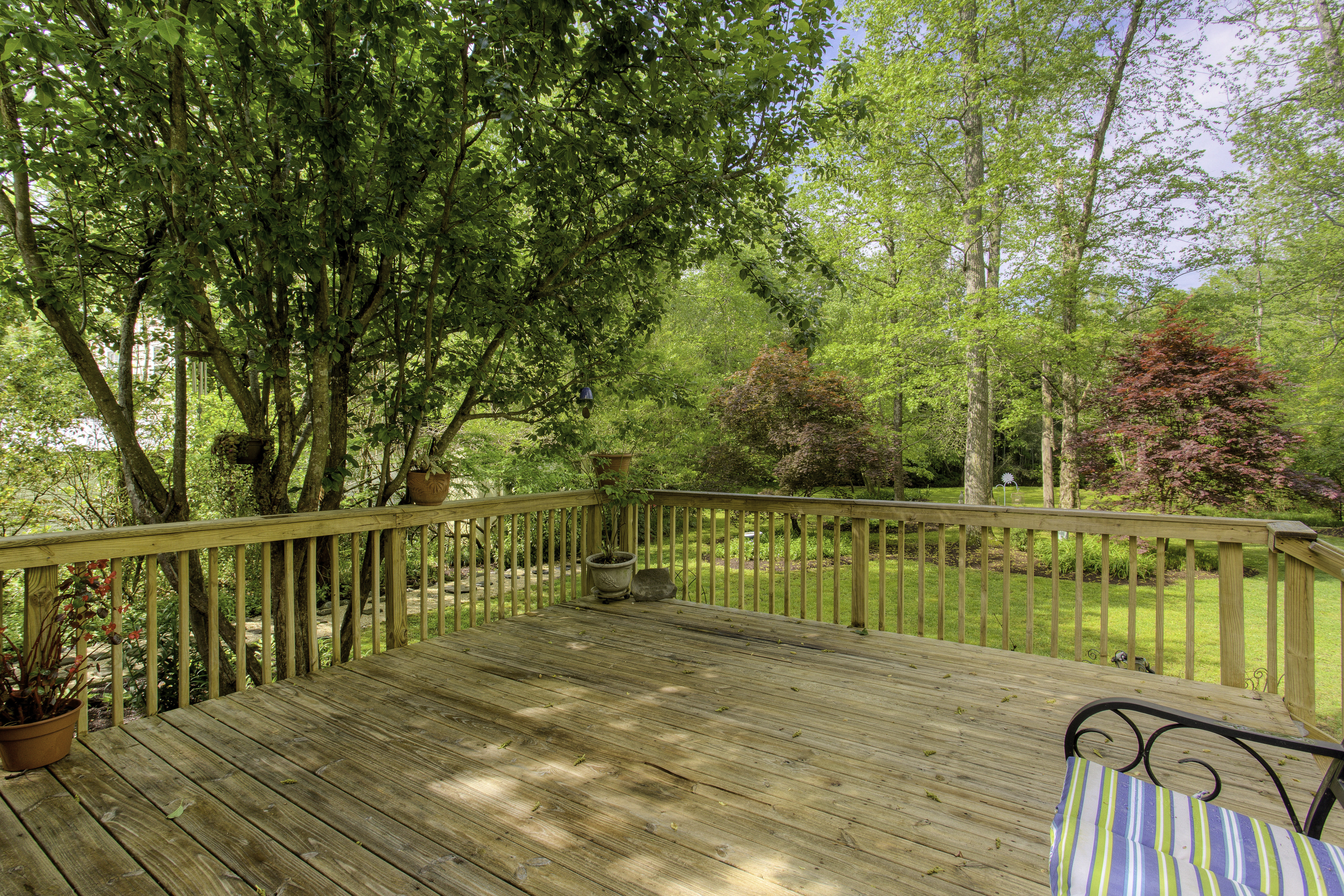
Why are my deck boards rotting? Several things could be to blame, including mold, termites, and moisture. Learn common causes and prevention methods.

